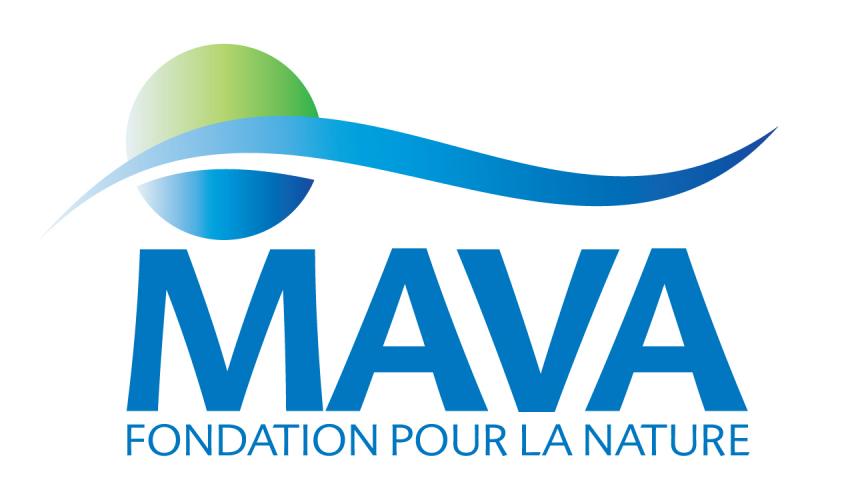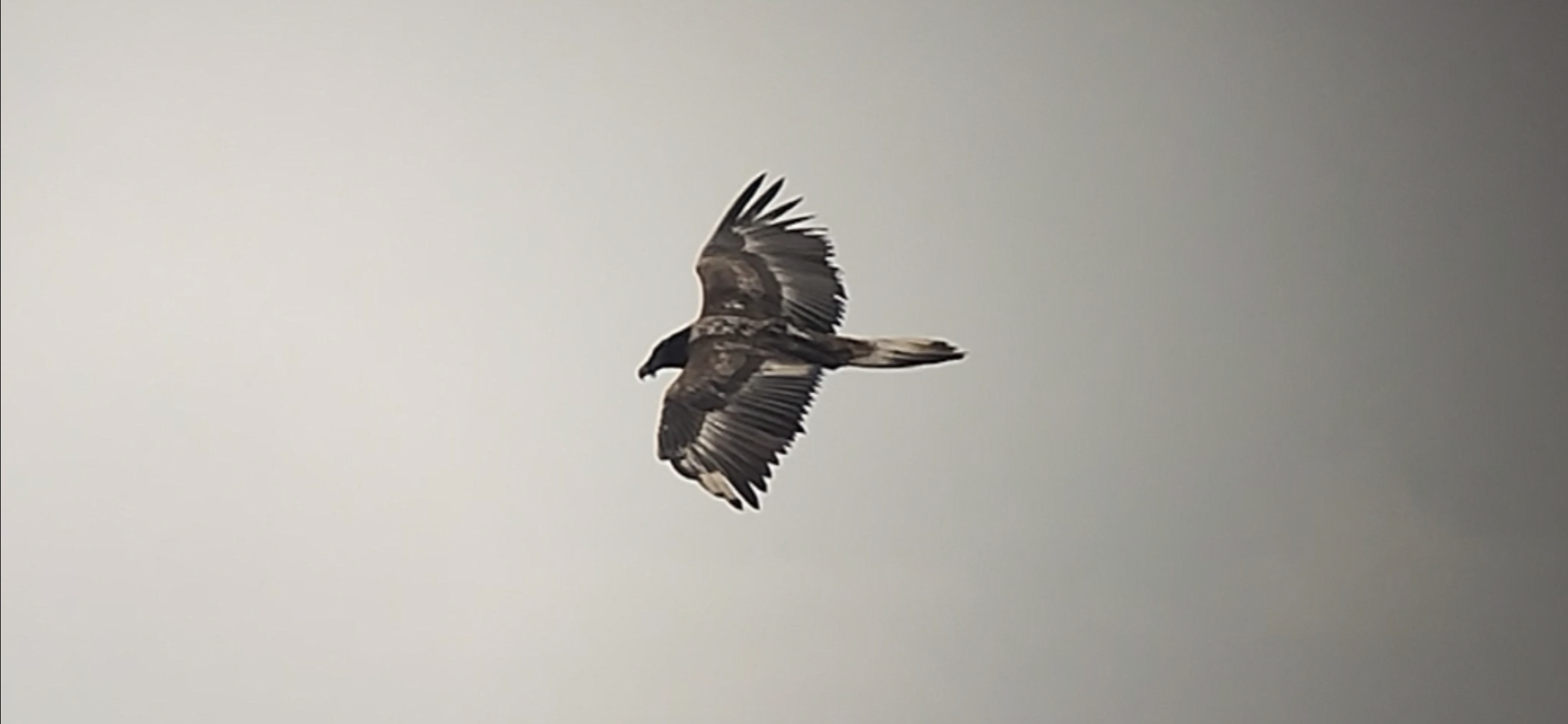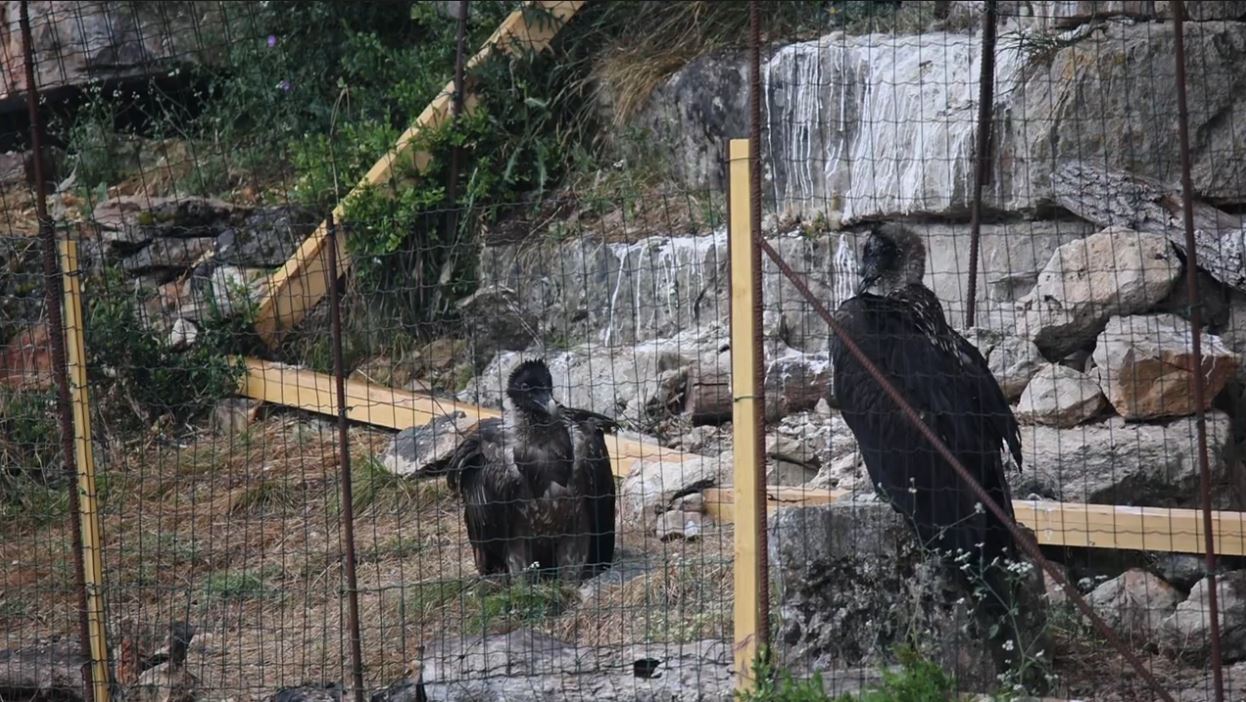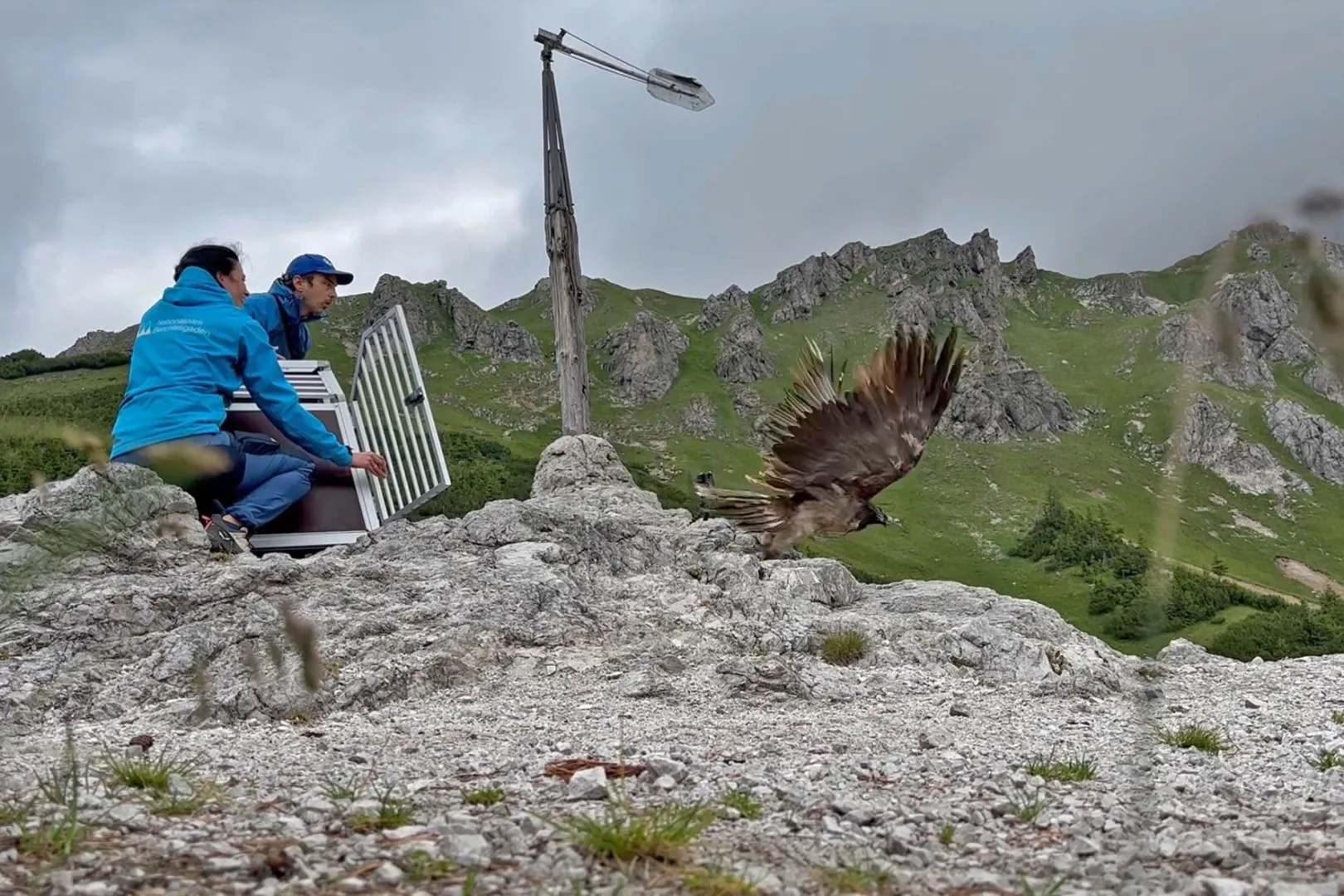
We last caught up with Bearded Vulture Calandreto back in July when he took his first long distance journey from his release site in the Parc Naturel Régional des Grands Causses in France’s Massif Central towards the Pyrenees. So where is he now?
From the Grands Causses and back again
Calandreto was one of four bearded vultures released in the Grands Causses back in 2017 and spent his first winter in the Causses, with sporadic forays into the Puy de Dôme, Ardèche and the Tarn – then last summer, on the 1st of June, it began a longer journey towards the Pyrenees.

After reaching the Pyrenees he circulated far and wide, visited feeding sites in Aragon (Spain), and spent quite a lot of time in the French-Spanish border area around the core area of the Parc National des Pyrénées – around Gavarnie and Ossau, valleys frequented by Bearded Vultures due to the abundance of marmots and chamois. The influx of vultures into the area along with the deaths of chamois and marmot kept him in the area over the summer and autumn.
Calandreto is the second Bearded Vulture released in the Grands Causses that went to the Pyrenees, following Cardabelle – released in 2012, and flying in the Pyrenees since May 2013. For a while it looked like Calandreto would spend his second winter in the Pyrenees, but at the beginning of November he began a journey eastwards and at the end of the month crossed Aude and the mountain range of Caroux and was spotted on the 1st of December back in the Parc Naturel Régional des Grands Causses.
He now joins the three other Bearded Vultures, Layrou, Adonis and Arcana, who are currently in the Causses. Calandreto’s journey to and from the Pyrenees is a fantastic achievement and is bringing us a step closer to achieving our aim of connecting the Alpine and Pyrenean populations of Bearded Vultures – precisely the main aim of our own LIFE GYPCONNECT.
LIFE GypConnect

Led by the League pour la Protection des Oiseaux (LPO), in partnership with the Vautours en Baronnies, LIFE GypConnect aims to establish a breeding population in the Massif Central and Department of the Drôme. Releasing captive-bred Bearded Vultures into the wild at sites such as the Parc Naturel Régional des Grands Causses and Parc Naturel Régional des Baronnies Provençales will create a core population that will connect the two populations of the species in the Alps and Pyrenees. To facilitate movements between the new population and the Alpine and Pyrenean populations the LIFE GypConnect team is creating a network of supplementary feeding stations, and tackling threats such as poisoning, and collision and electrocution with the electricity infrastructure.





